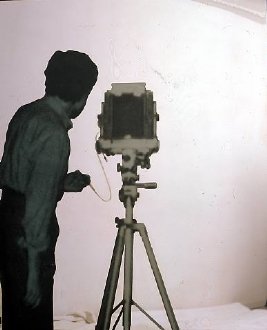Italian Visions
dal 19/2/2007 al 12/4/2007
Segnalato da
Alighiero e Boetti
Alberto Burri
Pier Paolo Calzolari
Enrico Castellani
Lucio Fontana
Jannis Kounellis
Fausto Melotti
Michelangelo Pistoletto
Mario Schifano
19/2/2007
Italian Visions
Vivian Horan Fine Art, New York
40 Years of Art

40 Years of Art
Vivian Horan Fine Art is pleased to present Italian Visions: 40 Years of Art, a group exhibition featuring 9 artists connected to the Arte Povera movement which demonstrates the artists’ shared focus upon concept and materials, attentiveness to the world and humanity, as well as poetic, political and historical concerns.
The Italian critic Germano Celant coined the term “Arte Povera” in 1967 after a group of Italian artists attempting to break down the dichotomy between art and life. The works included in this exhibition span the years 1959-2001 and employ various materials that expand beyond the picture frame while sharing an elegant force that follows in the Italian art tradition. This exhibit shows the rich, inventive spontaneity of Arte Povera artworks, which resonate with an abstract meditative quality.
Using various techniques, these works guide the viewer to look at art in new ways by asking one to be aware of their present space and to use not only their eyes, but their mind as well. Due to this inclination toward conceptual investigation, these artists share a dialogue with the Earthwork artists, Fluxists and 50s pre-Pop, featuring everyday materials and simplicity to join art with life.
Alighiero e Boetti (b. 1940-1994; Turin, Italy) Alighiero e Boetti’s Tutto (1986-87) is the largest and last of his embroidered work series, made in collaboration with Afghani women. Tutto, or “everything,” is replete with a multitude of images, suggesting ours is a culturally complex world.
Alberto Burri (b. 1915-1995; Città di Castello, Italy) Alberto Burri began his Cretto (cracked) paintings in the early 1970s. His other visceral art-making techniques include work with burning plastic, and collages with pumice, tar, and burlap. Placing materials foremost, Burri’s work is connected to the human body.
Pier Paolo Calzolari (b. 1943; Bologna, Italy) An interest in process and time-based installations has led Calzolari to work with malleable metals and organic materials, even to incorporate people and animals. Lead, neon, and a freezing structure compose Pier Paolo Calzolari’s 1970 work, L’aria vibra del ronzio degli insetti (The Air Vibrates with the Humming of the Insects). This grouping and arrangement transforms the materials’ characteristics, presenting them with intrigue and allusion to a meditative, infinite world.
Enrico Castellani (b. 1930; Castelmassa, Italy) The work of Enrico Castellani is about ideas — his monochromes, as an act of art, are a traditionally Minimalist notion of painting, color, and technique. Since 1964 Castellani has been producing Superficie Bianca, a series of varied white paintings on shaped canvas. Embedding the back of the canvases with nails alters the pliable surfaces of these works. The eye perceives light as soft and hazy on this 2001 work.
Lucio Fontana (b. 1899-1968; Rosario de Santa Fé, Argentina) Lucio Fontana was a pioneering painter and sculptor most recognized for his slashed canvas and sculptural series (started in 1949-50), entitled Concetto Spaziale (Spatial Concept). His cuts evoke a visceral sensation that joins the space of the work with that of the viewer, and the differing shapes reference male/female qualities. The cuts also recollect the crucifixion and the wounds of war. Included in the exhibition is an editioned brass sculpture with two slashes, Concetto Spaziale “Natura 1967”.
Jannis Kounellis (b.1936; Piraeus, Greece; lives and works in Rome, Italy since 1956) Jannis Kounellis uses materials, words, and sounds from the outside world to create a sensory experience that correlates to the fragmentation of the world post-WWII. Untitled (Notenblatt), incorporates sheet music altered by the hand’s force and drawing. The signs of the work — music notes and the hand’s action, function as vitalizing elements for the gallery. Over the years, as he developed visual techniques to move awareness away from the assigned meaning of an image, his work became increasingly sculptural.
Fausto Melotti (b.1901-1986; Raveneto, Italy) Fausto Melotti’s brass work Catenelle (1959-60) is characteristic of his minimal, abstract metal sculptural forms. His works are delicately imperfect, distinctly out of the ordinary compared to others’ monumental and volumetric sculpture, as they gain their potency from balance and grace. The non-static quality of Catenelle, or “chains,” offers a playful music aspect and tranquility.
Michelangelo Pistoletto (b. 1933; Turin, Italy) Michelangelo Pistoletto uses mirrored surfaces to engage the viewer in real-time space. The viewer is made attentive of their reflection as their place outside of the picture, framing their anxiety. Fotografia (1962-82) is a serigraph on stainless steel, which provides an unforgiving impact upon the viewer. His use of illusionism evokes cool Pop Art and Italian filmmakers.
Mario Schifano (b. 1934 Libya –1998; lived and worked in Rome, Italy) Mario Schifano led a colorful life as an artist, provocateur, filmmaker and rock musician. His work often shows his sophisticated and street-smart passion for politics. Particolare della strada (1961) is acrylic and enamel on paper, laid on canvas. The title of this early work, “Particular of the road” adds poetic meaning to the abstract image, whose separation recollects film stills and the reproduction of images in mass media.
Image: Michelangelo Pistoletto, Fotografia, 1962-1982
Vivian Horan Fine Art
35 East 67th Street New York, New York 10021
Mon.-Sat. 10am-6pm
Summer hours: Mon.-Fri. 10am-6pm



